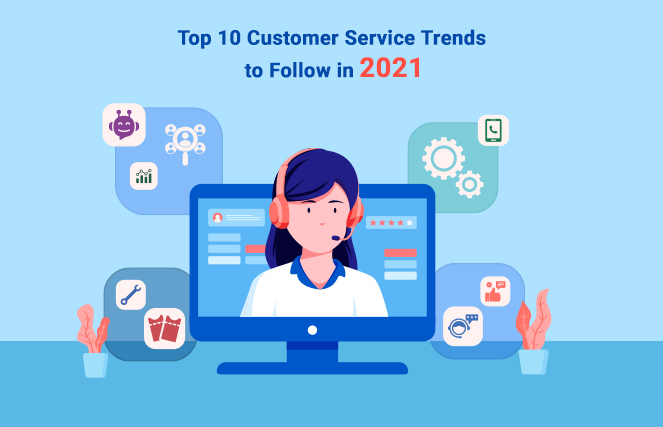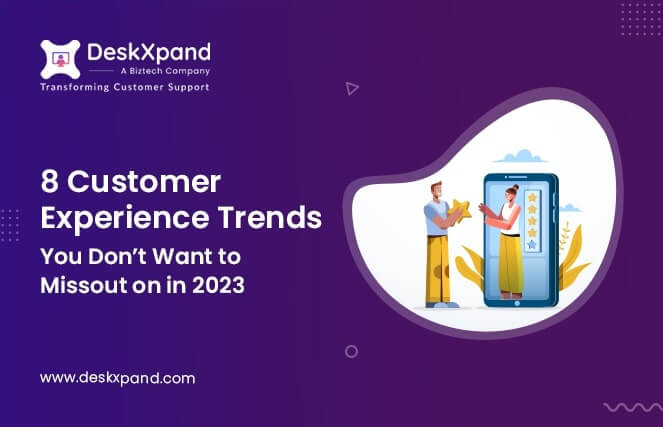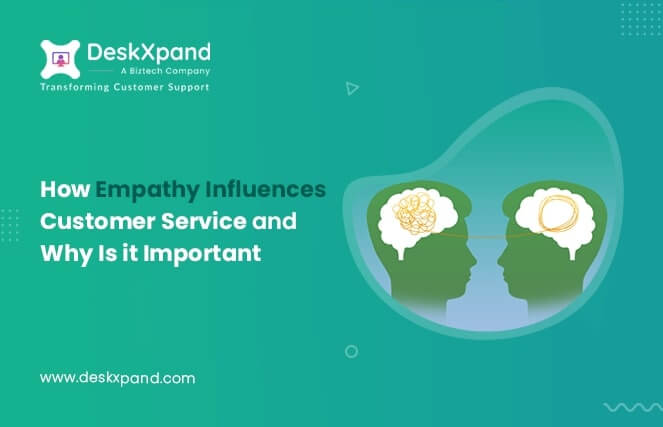According to a survey, 85% of experts agree that customer service determines the growth of their business. Especially in 2020, since the pandemic hit the world, customer service departments have been tested like never before. The year put a spotlight on contactless customer service as brands grappled with an influx of complaints and calls.
In 2023, tech-oriented customer service has become the bare minimum. Brands that follow the latest customer service trends can serve their customers the best. A customer-focused culture and system with customer-oriented features are the primary pillars of effective customer service in 2023. The key to converting your strategies into customer satisfaction lies in the right combination of the latest tools, trends, collaboration, and workflows.
Hence, it is time to revamp your customer service by integrating popular trends. Here’s our take on some of the fresh customer service trends that 2023 holds. Adapt the following ten popular trends to provide a higher standard of customer services and maintain a good rapport in the market.
1. Omnichannel System
Omnichannel service is one of the most popular customer service trends. 15 years ago, an average consumer typically used two channels when buying an item, and only 7% regularly used more than four. Today consumers use an average of almost six channels, with nearly 50% regularly using more than four.
Omnichannel systems allow you to streamline your communication process through a single unified channel and saves time and labor.
Research shows that companies that provide a consistent service quality across multiple channels retain 89% of their customers. In contrast, companies that do not provide a consistent service quality can only retain 33%.
The ways to handle customer services have dramatically changed over the past few years. A decade ago, there were limited ways to reach brands. But the scenario has changed now. Nowadays, brands need to provide multiple options for customers to choose from. They can pick whatever medium is convenient to them – phone, email, live chat, SMS, and social media. The list appears endless.
35% of customers expect to be able to contact the same customer service representative on any channel. Companies face a constant challenge to deliver consistent service quality across all the channels.
Statistics show that 47% of consumers admit using three to five different communication channels to get in touch. 90% of customers expect a consistent brand experience across all channels. The following graph shows the channels most preferred by the customers.
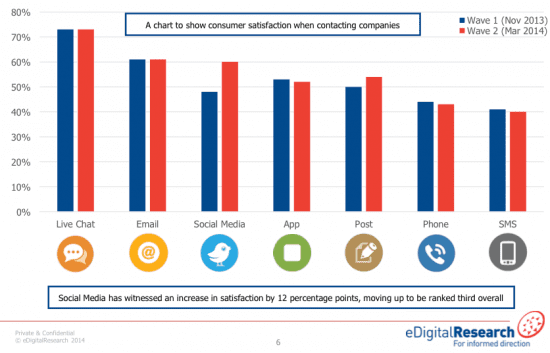
Most preferred communication channels
Omnichannel support helps businesses perform well and provide instant customer support. Multiple channels make sure that no customer query slips through the crack. It also helps you get insights and plan your task force accordingly.
2. Real-time Support with Live Chat
Technology has offered several ways for companies to connect with the customer. Live chat is an impactful customer service trend that helps brands connect with customers and help them know the product and service transparently.
Live chat is an effective way to guide the customers during their browsing journey. For example, if the customers are on your website, browsing your products, and are confused about making their final purchase. With a live chat option integrated right on your website, they can contact you instantly. It is the best way to provide real-time assistance and convey timely and accurate information.
The popularity of live chat is rising as time goes by. According to a survey, 1 in 4 (26%) consumers have used live chat to contact a company. 73% of customers were ‘satisfied’ or ‘very satisfied with the experience they received via this channel or touchpoint.
3. Automated Ticketing Features
According to a study, over 60% of US consumers prefer automated support to solve their queries. Automated ticketing support makes lives easier for customers as well as agents. It enables you to provide 24*7 support and helps reduce the cost of human support. Automation helps assist the support agents and reduces manual tasks.
An automated ticketing system can help you automate processes like workflows, ticket importing and assignment, Service Level Agreements, ticket status updating, notifications, escalations, and other such processes. Automation also considerably reduces the interaction rate of customers with the support agents. It limits it to just the complex and unusual tickets.
You can automate the ticket assigning process and redirect it to the appropriate agent. With an automated system in place, you can make sure that the client queries are transferred automatically to a department/agent specializing in that area. You can set up various categories to de-clutter the pile of incoming customer queries.
Speaking of automated ticketing software, DeskXPand is available with its latest automated ticketing features. Opt for DeskXpand and let your customers enjoy impeccable and fast service. Take a free trial and know yourself.
4. AI Chatbots
According to a survey, 30% of consumers agree that the most frustrating part of bad customer service is not being able to reach an agent. No one likes to wait for hours to solve simple doubts and queries. Hence the AI chatbots come into the picture.
AI chatbots are yet another growing customer service trend. The emergence and continuous rise of customer support bots or chatbots authorize companies to provide a gateway for round-the-clock support. It enables you to assist the customer immediately. Chatbots are a pocket-friendly solution to meet common customer queries. A report by CNBC states that chatbots will curtail business costs by $8 billion by 2022.
37% of customers report using an online virtual agent or chatbot from a website. Nearly these many customers have used a chatbot on a smartphone.

AI-powered tools for customer service.
According to another survey, 30% of US consumers rate chatbot interactions as “very effective.” It reduces the level one support and minimizes support costs. It provides transparency, enhances productivity, and improves the consumer experience.
5. Self-Service
A self-service is yet another and one of the most important customer service trends that helps customers seek answers by themselves. Self-service maximizes the overall efficiency and accuracy of customer service teams. It also minimizes the overall response time and reduces the burden for the agents.

Customers prefer knowledge base over other channels.

69% of consumers first try to resolve their issue independently, but less than one-third of companies offer self-service options such as a knowledge base. A knowledge base can also be called an automation feature since it reduces agents’ workload.
Imagine a scenario where the customer lands on your website and has queries. They might want solutions right at that moment. And if you have a well-structured knowledge base in place, they can find answers easily. This reduces the burden on the support department as agents won’t have to answer the same questions again and again. It also boosts customer satisfaction.
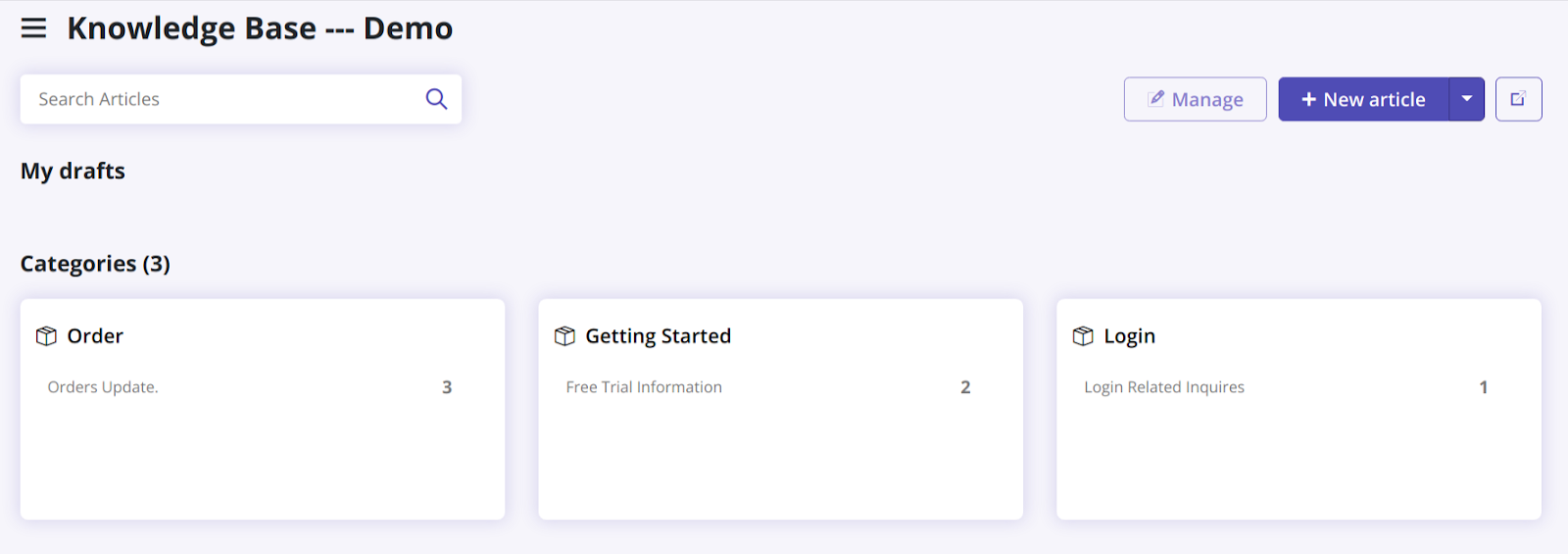
DeskXpand Knowledge Base Interface
One of the objectives of a knowledge base is its site-wide visibility. It is available round the clock across all locations. Companies can place an easy-to-see widget that redirects customers to their online library. This way, customers can access answers regardless of the page they’re on. You can also implement self-service by placing a CTA that says ‘I need help’ anywhere on your website.
You also need to make sure that all the links work fine and customers get redirected to relevant solutions. You can save a tremendous amount of time for both customers and agents by triggering the right prompts on your website. You can group, categorize and sub-categorize your articles to maintain a smooth flow of information.
6. Customer-Focused Culture
Customer-focused culture is not one of the new customer service trends, but it is an important one. If a company or brand’s inbuilt culture is customer-centric, it is more likely to attract customers and increase the retention rate.
According to a survey by Deloitte, 28% of support agents state that they understand the company’s culture well. Good customer service needs a customer-focused culture engrained into their support workflows. Customer-focused culture puts the customer in the center and regulates the customer support policies accordingly.
According to a survey, customers who switch companies due to poor service cost $1.6 trillion to U.S. companies. Better customer experience automatically means long-term customer retention. And long-term retention is always profitable. Therefore, most shareholders relate growth expectations to providing a better customer experience.
A customer-focused model must be built so that it moves with the changes and trends in customer demands. A customer-focused model is much more effective than a product-based model. It can ebb and flow, relying on the customer support agent with whom the customer interacts. Hence, companies need to ingrain a customer-focused culture to prove a consistent hallmark of their organization.
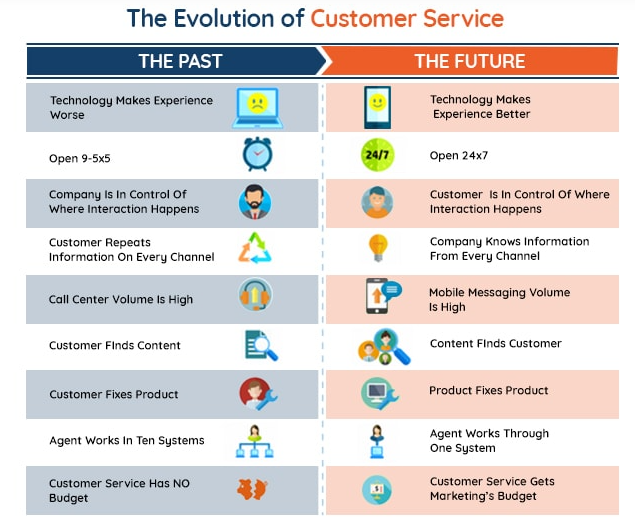
7. Personalization
Every customer loves personalization. They love services that are tailored to their specific needs exactly in the way they want. Customers expect companies to understand their requirements completely and recommend services and products accordingly. Businesses have adopted personalization to entice customers in order to make them purchase products and services.
This customer service trend helps develop loyalty with the customers. If you provide your customers with a chance to choose the way to connect with your brand, it will surely add value to their experience. Personalized support does wonders for customer retention.
It helps you engage with consumers with a personal touch to their experience. Companies can practice personalization by changing the smallest practices in their workflows. For example, whenever the agents interact with customers they can engage with them using their first name. You can also send them personalized emails which address them with their first name. You can also regularly study the customer interests from these experiences, understand their requirements, and task your agent force accordingly. Companies can gain a competitive advantage by simply considering customers as unique individuals and framing personalized customer support strategies.
8. Analytics and Reporting
Analytics and reporting are important to identify the popular customer service trends, empowering them with various data metrics and actionable insights. Through analytics, you can get a complete picture of your support performance. Later with the help of this data, you can evaluate your strategy to designing better customer experiences. You can also use this data to predict the behavior of prospective clients.
You can have information about the progress of the support tickets just by peeking into the ticket report. You can view these reports on customizable dashboards. With this data, you can achieve a well-oiled support workflow. You can use this data to improve your support performance.
9. Connect Social Media

You can use social media to turn strangers into friends, friends into customers, and customers into salespeople.

Active social media presence is yet another customer service trend and serves as an excellent way to connect companies with their customers. It is imperative to give your business a face on popular social media platforms.
Social media lets your customer contact you almost instantly and enables you to deliver support quickly. According to ValueWalk studies, 63% of customers expect companies to offer support via social media. You can make the social media channel a part of your omnichannel services. Your support team can intercept, solve the queries and respond to the customers from a single interface.
One of the biggest benefits of social media is that it helps you connect directly with your customers. Also, when you respond and resolve customer queries in public, it helps you improve your public relations. Other people on social media will notice the way you respond and how quickly you respond. This also proves to be a good publicity tactic without even making any extra effort.
10. Mobile-Friendly Support

Mobile is becoming not only the new digital hub but also the bridge to the physical world but also new customer service trends 2021.

Mobile phones influence more than just the digital business. A mobile-friendly interface will transform your entire business operations. A mobile-friendly interface plays the primary role in customer success and the efficiency of your customer support team. It develops customer relationships and builds a rapport with customers. Customer care through mobile phones is an advantage for your business because of its use of emerging trends in customer service.
So, this was all about popular customer service trends to optimize your customer support. These trends are currently ranking in 2021 and are here to stay with us in the future. Hence, it would be judicious to follow these customer service trends and invest in relevant customer service tools to lead your brand through these requirements.
Adopt DeskXpand: A One Stop Solution for All Your Needs
We are an ISO27001 certified customer service portal development company with 14+ years of development experience. Our products are embedded with all the latest customer service trends and features. We build products that you can customize according to your present and future needs. Functional experts and developers build DeskXpand with certifications in their respective fields.
DeskXpand helps you acknowledge the customer queries quickly and provide an effective solution at lightning speed. We would like to showcase how our product works effectively for your business. Start your trial now and find out more.

